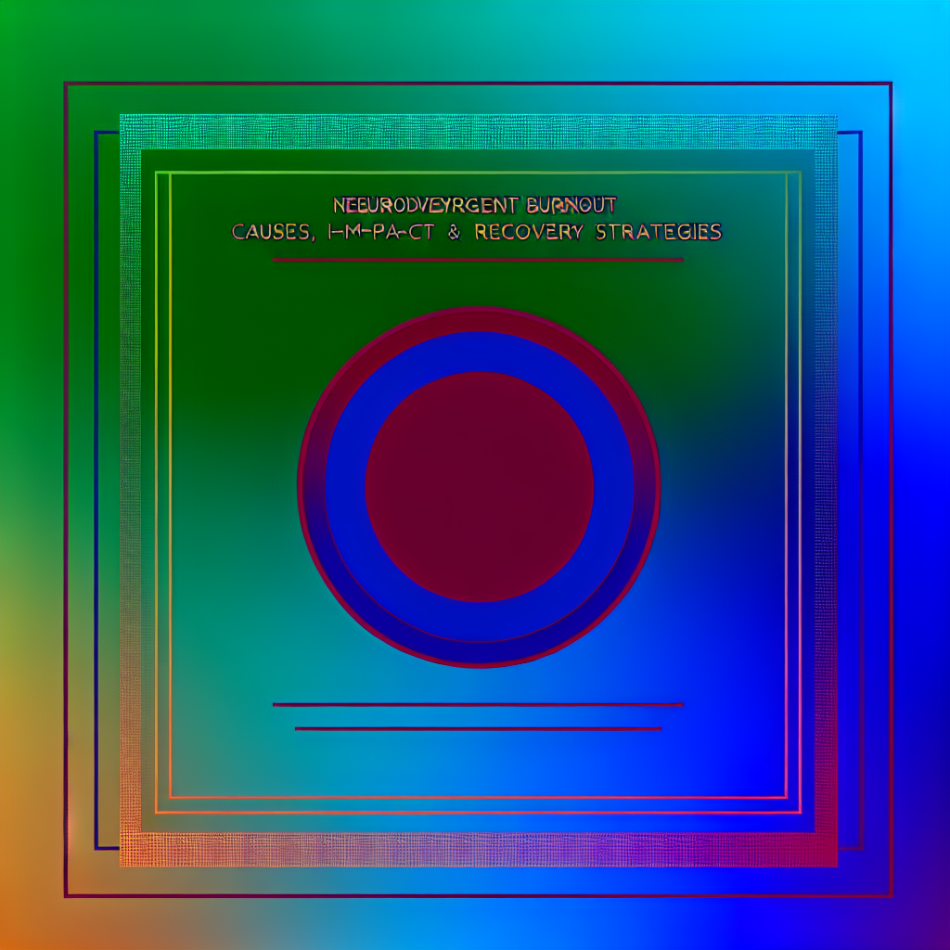Understanding Neurological Burnout in Neurodivergent Individuals
Burnout is often dismissed as mere tiredness, but for neurodivergent (ND) people, it’s a profound neurological exhaustion that rewires how they function. Unlike temporary fatigue, this burnout stems from chronic overstimulation, societal pressures, and the energy required to navigate a world not designed for their brains. This article explores the roots of ND burnout, its impact on daily life, and actionable strategies to mitigate its effects.
What Defines Neurological Burnout?
Neurological burnout is a state of chronic physical, emotional, and mental depletion caused by prolonged stress on the nervous system. For ND individuals—such as those with autism, ADHD, or sensory processing differences—this exhaustion is often tied to sensory overload, executive dysfunction, and the cumulative effort of masking (hiding neurodivergent traits to fit societal norms). Unlike typical burnout, recovery isn’t achieved through rest alone. The brain’s capacity to process stimuli, regulate emotions, or initiate tasks becomes compromised, creating a cycle that’s hard to break without targeted interventions.
Triggers and Contributing Factors
Neurodivergent burnout rarely has a single cause. It’s often the result of intersecting pressures:
- Sensory overload: Environments with bright lights, loud noises, or unpredictable social interactions force ND brains into constant overdrive.
- Masking: Mimicking neurotypical behaviour to avoid stigma is mentally exhausting and erodes self-identity.
- Executive dysfunction: Struggles with planning, prioritising, or task-switching lead to mental fatigue and self-criticism.
- Societal expectations: Pressures to conform to rigid work, education, or social norms ignore neurological needs.
These factors create a “stress debt” where the nervous system remains hyperactive, even during downtime.
The Impact on Daily Functioning
When burnout takes hold, everyday tasks become monumental. ND individuals might experience:
- Cognitive fatigue: Difficulty concentrating, memory lapses, or “brain fog” that impairs decision-making.
- Physical symptoms: Headaches, digestive issues, or chronic pain linked to prolonged stress.
- Emotional dysregulation: Increased sensitivity to criticism, meltdowns, or withdrawal from social contact.
This decline often leads to a loss of independence, strained relationships, and feelings of shame—especially if burnout is misunderstood as laziness or incompetence.
Breaking the Cycle: Strategies for Recovery
Addressing ND burnout requires a neuroaffirming approach that prioritises individual needs over societal expectations. Key strategies include:
- Self-compassion over productivity: Redefine success by valuing rest and boundaries rather than output. Permit yourself to say “no” without guilt.
- Sensory regulation: Create low-stimulus spaces, use noise-cancelling headphones, or adopt stimming (self-stimulatory behaviour) to self-soothe.
- Unmasking safely: Gradually reduce masking in supportive environments to conserve energy and reconnect with your authentic self.
- Pacing and prioritisation: Break tasks into micro-steps, use visual planners, and schedule recovery periods between activities.
- Professional support: Therapists specialising in neurodiversity can help reframe self-perception and develop coping mechanisms.
Preventing Burnout Through Systemic Change
While personal strategies help, lasting solutions require societal shifts. Schools and workplaces must adopt flexible structures—like sensory-friendly lighting, quiet zones, or task-based deadlines—to accommodate neurological diversity. Advocacy for ND rights, such as reduced working hours or access to assistive technology, can alleviate systemic pressures. Normalising neurodivergence in media and education also reduces stigma, making masking less necessary.
Embracing a Neuroaffirming Future
Recovering from burnout isn’t about “fixing” neurodivergence but reshaping environments to honour different brains. By validating ND experiences and challenging outdated norms, we foster resilience. Progress may feel slow, but incremental changes—whether a sensory break at work or unmasking with a trusted friend—build sustainable pathways toward well-being.
Conclusion: Redefining Rest in a Neurodivergent World
Neurological burnout in ND individuals is a complex interplay of biology, environment, and societal neglect. Unlike conventional fatigue, it demands solutions that go beyond superficial self-care. Recognising burnout’s roots in systemic ableism and sensory overwhelm is the first step. From there, integrating personalised coping strategies and advocating for inclusive spaces can restore agency. Remember: healing isn’t linear, but every effort to honour your neurological needs is a radical act of self-preservation.
